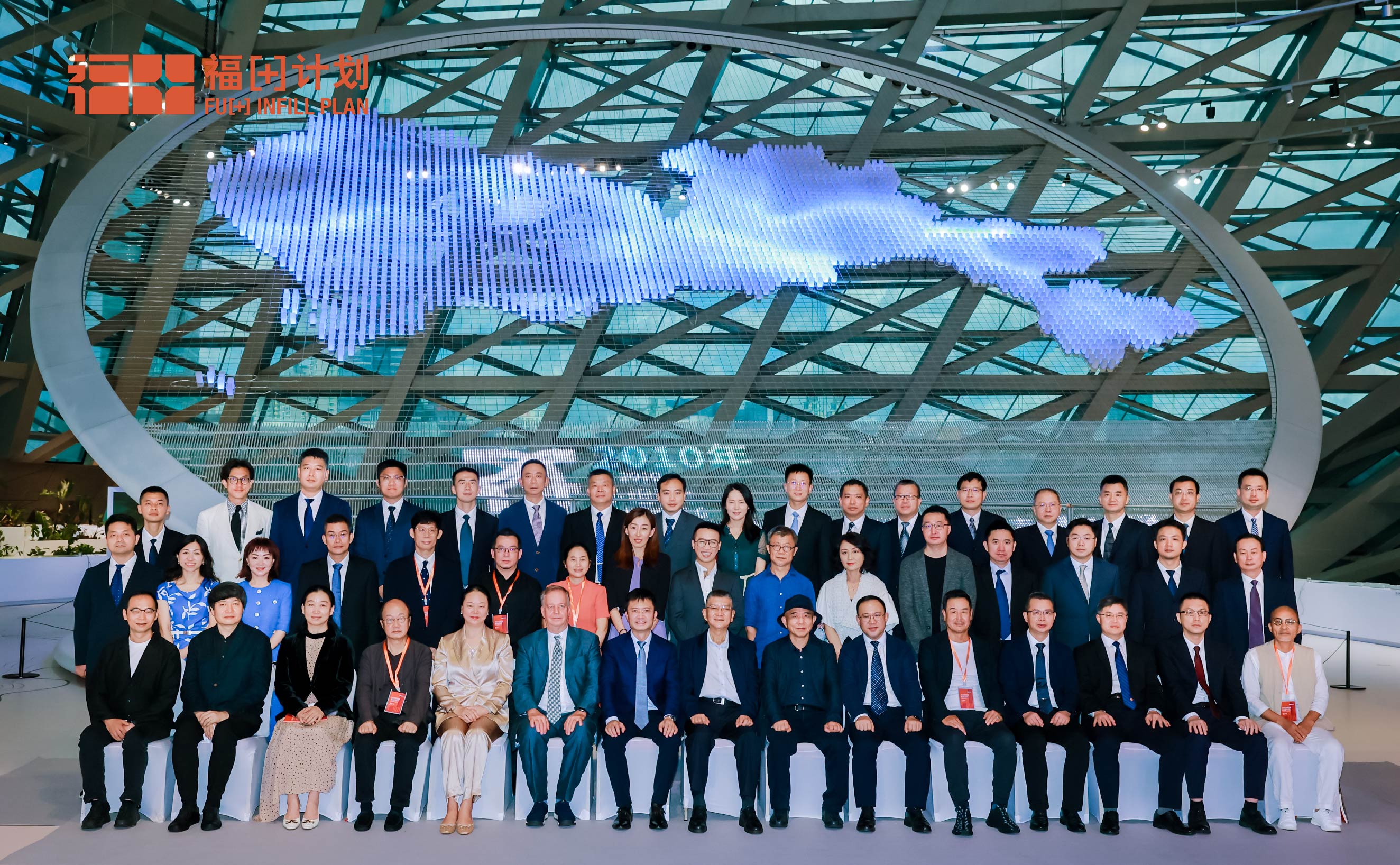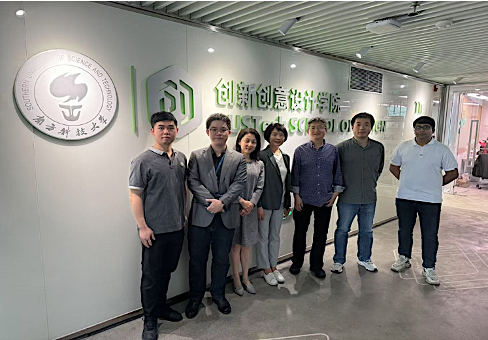Aug 20. 2022 - Latest News
On August 20th, 2022, Prof. Tom Kvan, the Dean of the SUSTech School of Design, was invited to participate in Shenzhen International Urban Aesthetics Forum 2022 and delivered a keynote speech in the parallel session themed “Digital Art, Metaverse Culture and Future Urban Aesthetics”.


Group Photo
Organized by the Chinese Society for Aesthetics and the Futian District Committee of Shenzhen Municipal Committee of the CPC and Futian District Government of Shenzhen Municipality, the Forum 2022 was staged in Shenzhen Museum of Contemporary Art and Urban Planning, representing the first of its kind in Shenzhen. In the morning, HUANG Wei, the Secretary of the Futian District Committee of Shenzhen Municipal Committee of the CPC, and GAO Jianping, the President of the Chinese Society for Aesthetics and Previous President of the International Association for Aesthetics, were present and gave the opening remarks at the forum. WANG Jingsheng, the winner of the UNESCO Confucius Prize for Literacy and the special expert of National Culture and Arts Think Tank, and MENG Jianming, the Academician of Chinese Academy of Engineering and the National Architectural Design Master were invited to deliver the keynote speeches.
In the afternoon, two parallel sessions were organized to explore two topics respectively, namely Digital Art, Metaverse Culture and Future Urban Aesthetics, and Empowerment and Evolution of Shenzhen's Urban Public Space. In the parallel session with the theme of Digital Art, Metaverse Culture and Future Urban Aesthetics, Tom Kvan delivered a keynote speech titled Three Thoughts on Aesthetics.


Tom KVAN delivers the keynote speech
He elaborated that an aesthetic is an articulation of experience, and by using materials, techniques and ways of thinking, the key ideas and values of could be expressed, meanwhile, aesthetics can derive from and express science while it can also influence science and technology. In addition, an aesthetic is expressed using every of our senses and is specific to a place, a culture, a time, a designer or an artist, demanding coherence with its context. Shenzhen is a city looking forward and making the future, and its different precincts have different characters and thus can have their own aesthetics. In both physical and virtual space, a clear aesthetic language is an articulation of experience anchored in culture, develops, and changes over time, and demonstrates consistency and coherence across the many ways of application. This language also needs to be expressed with confidence.
Following the speech, Tom Kvan joined the dialogue moderated by WANG Haidong from Shenzhen Radio, Film and Television Group. Other guests in the dialogue included YAN Weixin, the Director of Shenzhen Museum of Contemporary Art and Urban Planning, FENG Feng, the Dean of the School of Transmedia at Guangzhou Academy of Fine Arts and the Executive Director of Shenzhen OCAT Art & Design Gallery, LUAN Qian, the Vice President of Shenzhen Design and Art Alliance, LV Hongrong, the Founder of Shenzhen Jupiter Museum of Art, and Manfred Yuen, the Founder of GROUNDWORK. In the dialogue, several topics were deeply explored, including the discourse evolution of aesthetics and city, the inspiration, and multi-faceted influences of digitalization and metaverse on society, arts institutions and artwork markets, and the characteristics, development directions and ethic orientation of future urban aesthetics in Shenzhen.


Guest Discussion
During the whole-day forum, more than thirty scholars, experts and industrial representatives gathered and jointly discussed aesthetics in the urban and future context to seek suggestions for the aesthetic development of Shenzhen. The faculty and students at the school also participated in the forum either online or in person and listened to the wonderful discussion and speeches about the urban environment and cultural development.
Since its establishment, SUSTech School of Design has been dedicated to actively engage in city events and the overall development of Shenzhen and the Guangdong-Hong Kong-Macao Greater Bay Area, focus on the integration of industry and education and the topics related to the city development, serve the local economy and culture, cultivate leading design talents, and ultimately contribute to the development of Shenzhen into a city of innovation, entrepreneurship and creativity with global influence.
Keynote Speech by Tom KVAN
Three Thoughts about Aesthetics
I have only 8 minutes to talk about an enormous topic. When preparing for this opportunity, I searched the Library of Congress catalog using this term, it gave me 7496 items in the library that use the word in their title. That illustrates the range of the topic, with many diverse opinions, but I will therefore have to assume we agree what it means and how it is used, but that is the problem, it means many things and it is difficult to find time to agree.
I will discuss the topic by asking three questions
· Is an aesthetic specific to a place or culture or is it universal?
· How does aesthetics relate to science and technology?
· What is the aesthetic of Shenzhen and the metaverse?
I start with the basic question, Is an aesthetic specific to a place or culture or is it universal?
We can use aesthetics when we talk about beauty or the appreciation of beauty. We might say "the pictures give great aesthetic pleasure". What I would mean by that is that looking at the picture rewards me with some sense of satisfaction, understanding and alignment with my values. I sense that I understand what I am looking at.
When we talk about aesthetics, we might say that we like the Bauhaus aesthetic or the Hermès aesthetic. When we say that, we are saying that we appreciate the set of principles underlying and guiding the work of a particular artist or artistic movement.
Therefore, we can also differentiate between an Italian aesthetic or a Danish aesthetic. It also changes over time, so we can differentiate between an article from 1800 or 2020.
The reason we can use the word is beside there are differences but these differences demonstrate that an aesthetic is specific to a place, or a culture, or a time, or a designer or artist. It is these differences that give us a reason to talk about an aesthetic as distinct from another aesthetic, or no aesthetic.
What is the difference then between an aesthetic and decoration? An aesthetic is expressed using every of our senses, visually through shapes, colors; by sound or smell or taste or touch and any combination of these. There is a classical aesthetic, a jazz aesthetic, a Californian aesthetic. If we bring together a wide variety of shapes, colors, smells and tastes, we get confusion. The result is not an aesthetic.
An aesthetic demands coherence with its context, so that leads in the metaverse, to the next question.
So now to the second question, how does aesthetics relate to science and technology?
To address this question, I must raise a different issue. Underlying the discussion of aesthetics is the deeper question of the role of art in a society.
I can only address this from a European perspective. For me, art is a way of understanding the world I live in. An artist presents their understanding through their artform. A poet writes of their world and helps us understand some of what they know. A sculptor or painter does the same, but a perfumer or chef does the same. By using particular materials, techniques and ways of thinking, the artist expresses some key ideas, values and perspectives.
When artists in the Italian Renaissance made drawings to describe their world, they used the perspective technique to describe what they saw. This technique tells you that they saw the world as a place that is strictly organised by principles. A painter in China at that time would not represent what they see in the same way, the mathematical order does not describe the complexity of the connections in the world.
One hundred years ago, the cubists such as Picasso understood their world in a very different way. By then, science had introduced the concept of relativity, an image was now understood to be an accumulation of perceptions. No longer was it appropriate to use simple geometry to describe with certainty what we could see as one simple image.
In other areas of design, we can find examples. The work of Aalto, for example, explored the new technology of bent wood or glass to produce affordable furniture at a time when resources were not easily available.
Each of these artistic approaches can be discussed in the broader context of their aesthetic category, each very different. What they all illustrate is that there is no distinction between aesthetics and science and technology. I have only described how art and hence aesthetic can derive from and express science but, if I had more time, I would talk about the reverse, how aesthetics influences science and technology. It is a cultural conversation between the disciplines and many scientists have spoken or written about the way they have been influenced by aesthetics.
An aesthetic therefore is an articulation of experience anchored in a culture.
Finally, let us turn to the third question. What is the aesthetic of Shenzhen and the metaverse?
Every major city has an aesthetic and each is different. I can show you pictures of Rome, or New York, for example, and you will know which city it is. The aesthetic is expressed in the way the streets are used, how the urban furniture is designed. In fact, different parts of these cities have different aesthetics. This aesthetic express the lives people live in these precincts. They support way they use their time, how they enjoy the public spaces, how they feel. Some aesthetic expressions can be city-wide, such as the way Bilbao use their metro stations to express a culture. The larger question then is how the metaverse and Shenzhen intersect.
I have asked the three questions because they address some basic aspects of what I understand to be the foundations of aesthetics. In this context, in closing, let me note that a clear aesthetic language is, in my opinion, one that is an articulation of experience, it demonstrates consistency and coherence across the many ways you might apply it, and it needs to be expressed with confidence.

Apr 8. 2025 - Latest News

Jan 6. 2021 - Latest News

Mar 21. 2025 - Latest News